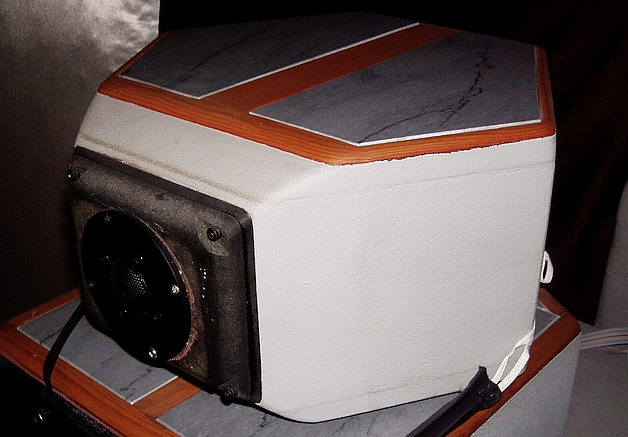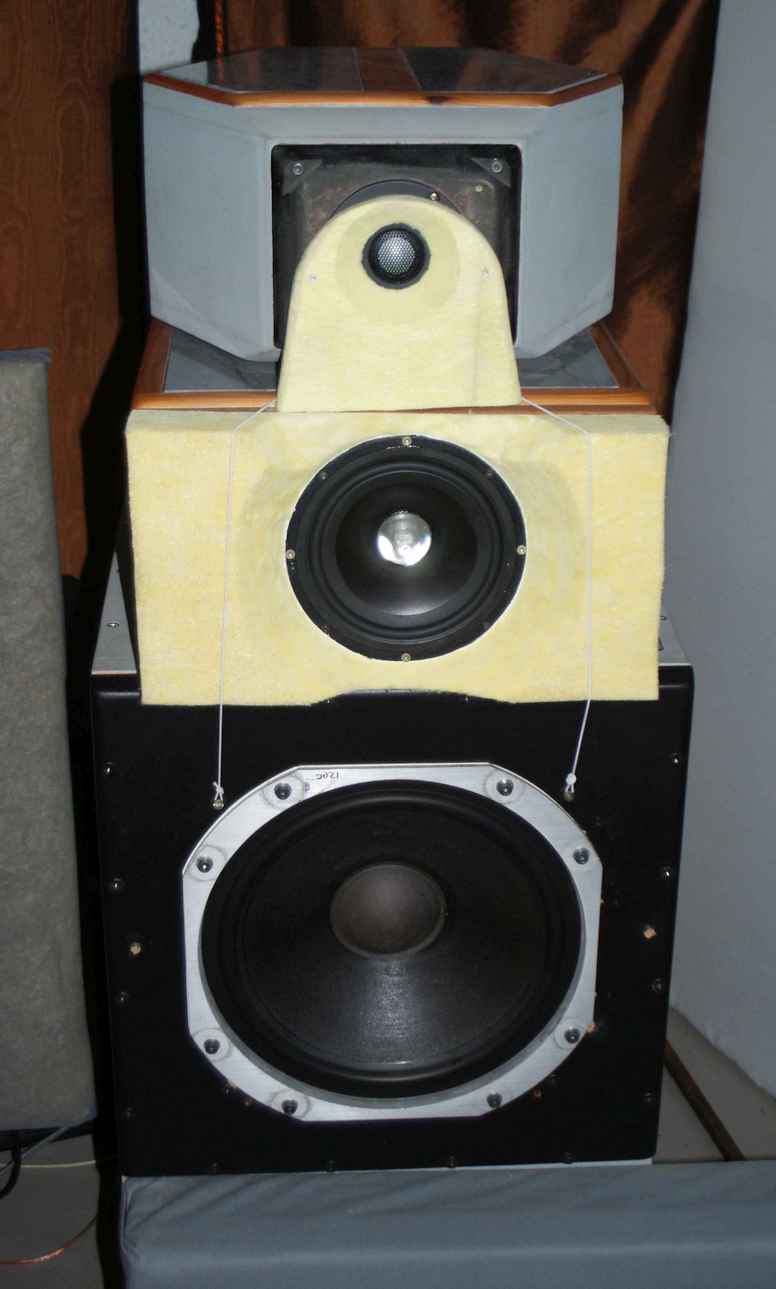
TLL
With TLL, I wanted to build a loudspeaker that could be up to date all the time! Meaning:
1: Possibility to change individual loudspeaker units.
2: Possibility to adjust to correct frequency, phase and impulse response.
3: A cabinet without resonances and sound degradation.
This worked, and TLL is today better than ever. Let's look at how and why.
1: The solution was simple, a fitting/front board, that could be made to a specific loudspeaker unit, and could be replaced with another, when the need to upgrade to a newer/better speaker unit was necessary. The photographs shows it quite clear; front board is black, speaker cabinet itself is grey.
2: You have to work with individual cabinets for each speaker unit. If you change speaker units, you also change the acoustic center
or phase plane. If you want the best possible frequency, phase and impulse response, phase planes (for 2 speaker units) should be aligned at the crossover frequency. This means that you have to be able to move one cabinet in relation to another. In other words, in a 3-way speaker, you have to work with 3 separate loudspeaker cabinets!
The photographs below tells it all.
3: This is where the drawback comes in. The cabinet has to be very solid, and it has to be heavy. Why heavy? Because there is a moving loudspeaker cone with a physical mass.
Let's say you have a woofer with a cone mass of 50 grammes. If we state that cabinet vibration is bad, and we just for now treat the cabinet as a single, uniform mass: if you want the cabinet vibration to be 60 dB below signal level, (equivalent to a distortion of 0.1 %.), cabinet mass has to be 1000 times cone mass, meaning 50 kilos!! And note, I don't even mention vibrating cabinet fronts, sides or similar – they themselves have much lower mass. This is according to Newton's law of Action and Reaction.
My solution to all cabinet aspects was a double wall cabinet, with sand in between, for the woofer, and a concrete wall cabinet filled with sand for midrange and tweeter. You can see more images and drawings under: TLL details (opens in new tab).
Results: Bass cabinet weight is approx. 170 kg, giving a mass relation of more than 1/1000 for my 2 12” speakers, each with a cone mass of 70 grammes. Midrange cabinet is 34 kg, and around 1/2500 with my present midrange unit, tweeter cabinet is 22 kilos, giving a whopping ratio of 1/20.000.... Why better ratios for mid and tweeter?? Because of our hearing, we are much more sensitive to sound degradation in the midrange and tweeter frequency area.
Does it work?? YES, it does!!! I can not hear any distortion or degradation from vibrating cabinet surfaces, or the cabinet itself – or vibrations transferred to the floor. One important detail – the sand must be close to the speaker unit, and must have it's mass in the same direction as membrane movement – meaning right behind the speaker element edges – that is the reason for my bass cabinet shape. See images below.
Hmmm, with a total of more than 450 kilos for a stereo system, I began to think, and to search for another solution, to avoid woofer induced cabinet vibration, since the woofer by far is the most powerful speaker unit. My solution, for which I filed a patent application, can be seen in my Junior
and Baby
cabinets, just click links below to read more.
More details about TLL here:TLL details and more general Thoughts about Loudspeakers
below.
Present equipment (11_2023) used with TTL:
TEAC P-500 CD Drive, MiniDSP Flex 8 Digital preamp/filter, Sony N220 4-channel Power amp in bridge mode, for woofer, Mark Alexander Power Amplifier, for midrange,Link here, LJ 30W Complementary Amp Link here,for tweeter.

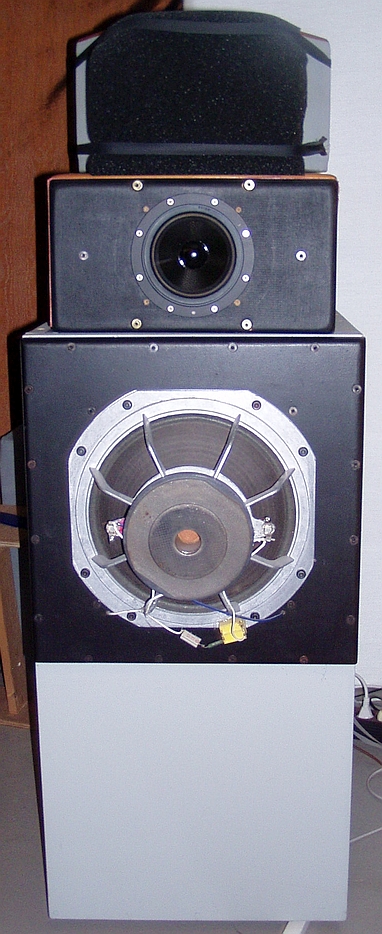
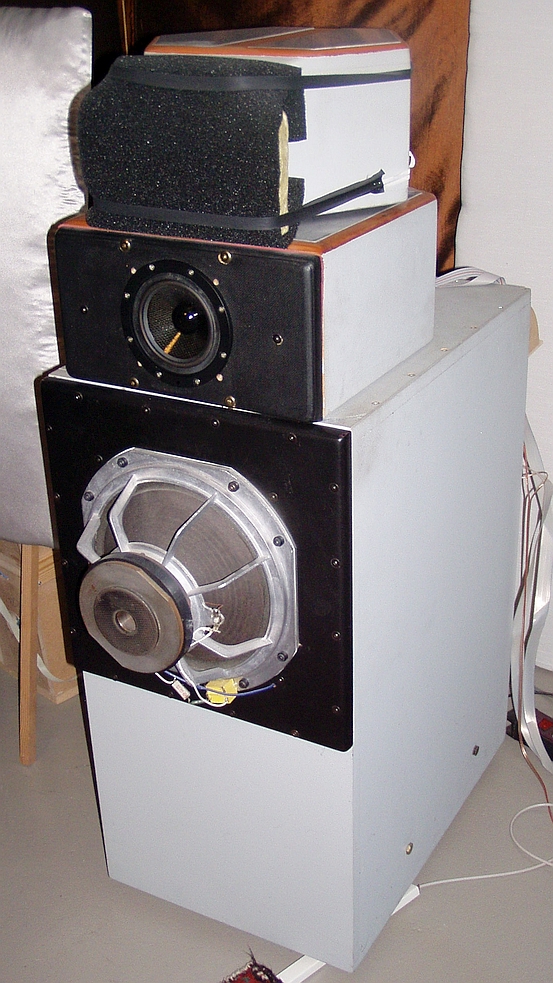
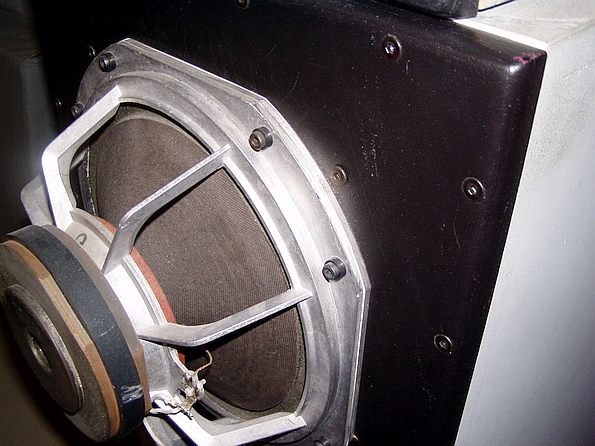
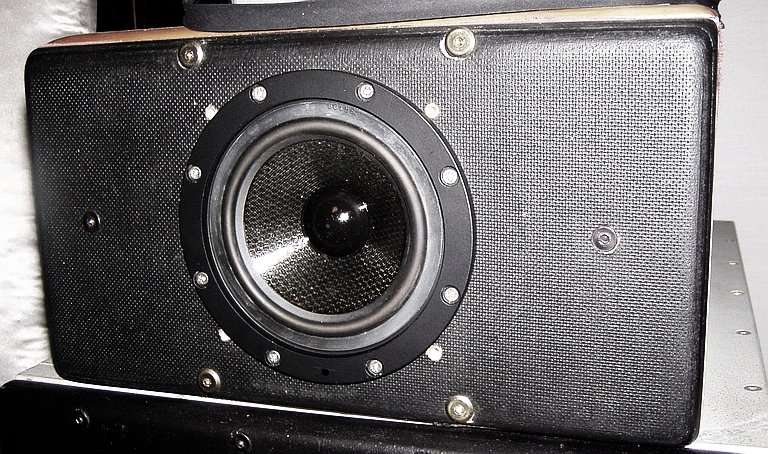

detailssection.

